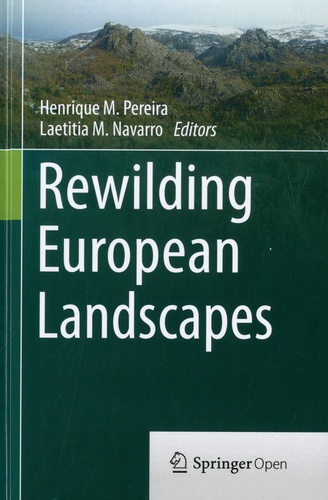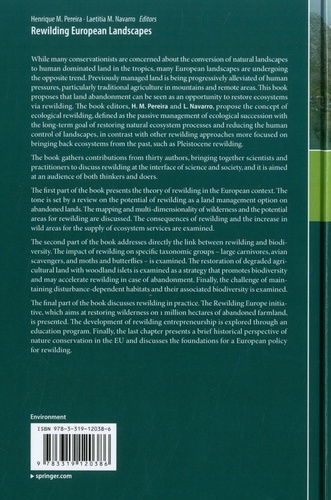En cours de chargement...
While many conservationists are concerned about the conversion of natural landscapes to human dominated land in the tropics, many European landscapes are undergoing the opposite trend. Previously managed land is being progressively alleviated of human pressures, particularly traditional agriculture in mountains and remote areas. This book proposes that land abandonment can be seen as an opportunity to restore ecosystems via rewilding.
The book editors, H. M. Pereira and L. Navarro, propose the concept of ecological rewilding, defined as the passive management of ecological succession with the long-term goal of restoring natural ecosystem processes and reducing the human control of landscapes, in contrast with other rewilding approaches more focused on bringing back ecosystems from the past, such as Pleistocene rewilding. The book gathers contributions from thirty authors, bringing together scientists and practitioners to discuss rewilding at the interface of science and society, and it is aimed at an audience of both thinkers and doers.
The first part of the book presents the theory of rewilding in the European context. The tone is set by a review on the potential of rewilding as a land management option on abandoned lands. The mapping and multi-dimensionality of wilderness and the potential areas for rewilding are discussed. The consequences of rewilding and the increase in wild areas for the supply of ecosystem services are examined.
The second part of the book addresses directly the link between rewilding and biodiversity. The impact of rewilding on specific taxonomic groups - large carnivores, avian scavengers, and moths and butterflies - is examined. The restoration of degraded agricultural land with woodland islets is examined as a strategy that promotes biodiversity and may accelerate rewilding in case of abandonment. Finally, the challenge of maintaining disturbance-dependent habitats and their associated biodiversity is examined.
The final part of the book discusses rewilding in practice. The Rewilding Europe initiative, which aims at restoring wilderness on 1 million hectares of abandoned farmland, is presented. The development of rewilding entrepreneurship is explored through an education program. Finally, the last chapter presents a brief historical perspective of nature conservation in the EU and discusses the foundations for a European policy for rewilding.







